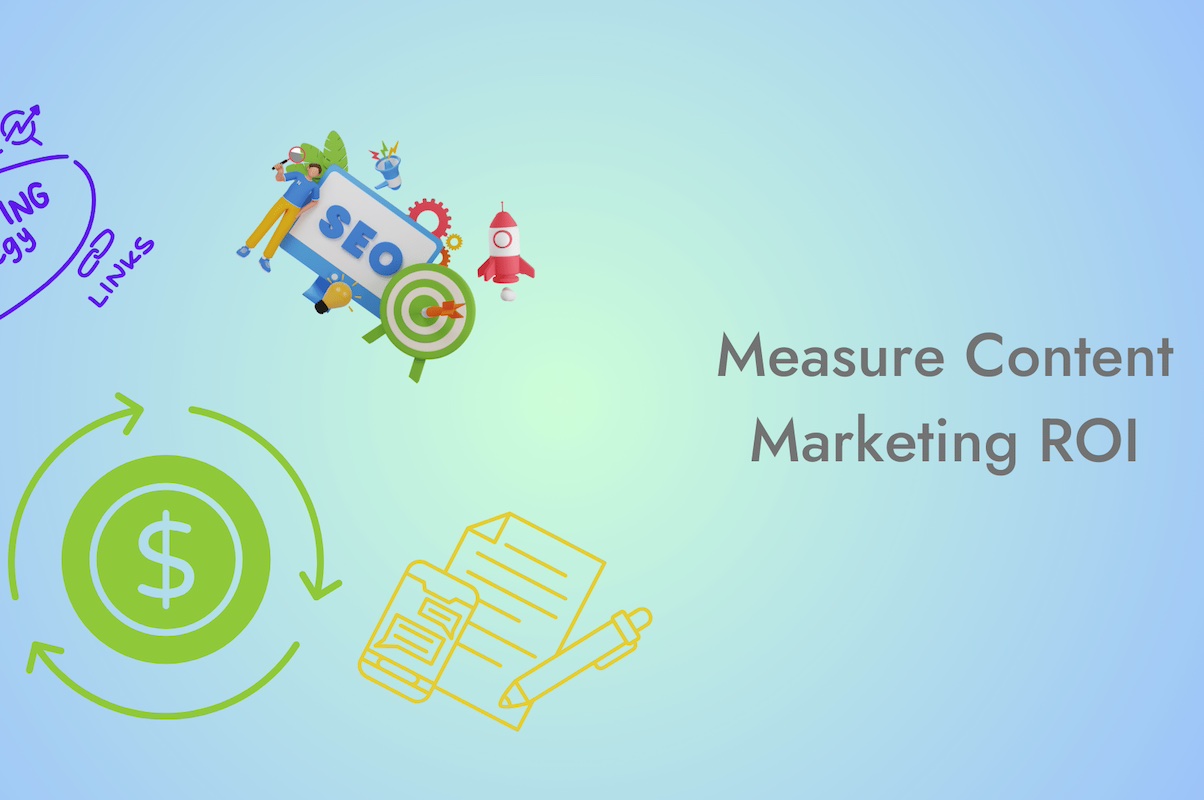Measuring Content ROI: Key Metrics and Tools for Success
In the dynamic realm of digital marketing, measuring return on investment (ROI) for content has become indispensable for businesses aiming to justify their marketing expenditures, optimize strategies, and drive sustainable growth. This comprehensive guide explores the essential metrics, methodologies, and tools required to effectively measure content ROI, empowering marketers to demonstrate the value of their content efforts and make data-driven decisions.
Understanding Content ROI
Content ROI refers to the return on investment generated from content marketing efforts, which can encompass various goals such as brand awareness, lead generation, customer acquisition, and revenue generation. Measuring content ROI involves evaluating the impact of content initiatives against the resources invested, providing insights into the effectiveness and profitability of content marketing strategies.
Key Metrics for Measuring Content ROI
1. Consumption Metrics
- Page Views: Total number of views for a piece of content.
- Unique Visitors: Number of distinct individuals who view the content.
- Time on Page: Average duration visitors spend on a page.
- Bounce Rate: Percentage of visitors who leave the page without further interaction.
2. Engagement Metrics
- Social Shares: Number of times content is shared on social media platforms.
- Likes, Comments, Shares: Interactions and engagement levels on social media posts.
- Comments and Discussions: Number of comments and discussions generated by the content.
3. Lead Generation Metrics
- Conversion Rate: Percentage of visitors who complete a desired action (e.g., filling out a form, downloading a resource).
- Lead Quality: Assessing the quality of leads generated through content marketing efforts.
- Cost per Lead (CPL): Total spend divided by the number of leads generated.
4. SEO Performance Metrics
- Organic Traffic: Amount of traffic generated through organic search engine results.
- Keyword Rankings: Positioning of content for targeted keywords in search engine results pages (SERPs).
- Backlinks: Number of inbound links pointing to the content, indicating authority and SEO value.
5. Sales and Revenue Metrics
- Conversion to Sale: Percentage of leads that convert into paying customers.
- Customer Lifetime Value (CLV): Predicted revenue generated from a customer over their lifetime.
- Revenue Attribution: Direct revenue attributed to specific content pieces or campaigns.
6. Customer Retention and Loyalty Metrics
- Repeat Visits: Frequency of return visits from existing customers or leads.
- Retention Rate: Percentage of customers who continue to engage or purchase over a specific period.
- Customer Satisfaction: Feedback and sentiment analysis from customers regarding content relevance and usefulness.
Tools for Measuring Content ROI
1. Google Analytics
- Features: Provides comprehensive insights into traffic sources, user behavior, conversions, and goal tracking.
- Use Cases: Track page views, conversions, traffic sources, and engagement metrics.
2. Social Media Analytics Tools
- Features: Analyze performance metrics such as likes, shares, comments, and impressions across social media platforms.
- Use Cases: Measure social shares, engagement levels, and audience demographics.
3. Marketing Automation Platforms
- Features: Track leads, conversions, and customer journeys from initial engagement to conversion.
- Use Cases: Assess lead generation, conversion rates, and customer acquisition costs.
4. CRM Systems
- Features: Manage customer relationships, track sales pipelines, and analyze customer interactions.
- Use Cases: Measure customer lifetime value, retention rates, and revenue attributed to content efforts.
5. Content Marketing Platforms
- Features: Manage content creation, distribution, and performance tracking in one platform.
- Use Cases: Monitor content consumption, engagement metrics, and ROI across campaigns.
Best Practices for Measuring Content ROI
1. Set Clear Objectives and KPIs
Define specific goals and key performance indicators (KPIs) aligned with business objectives (e.g., lead generation, revenue growth, brand awareness).
2. Implement Tracking and Attribution
Utilize tracking tools and attribution models to link content efforts to measurable outcomes (e.g., conversions, sales).
3. Regularly Monitor and Analyze Performance
Conduct ongoing analysis of content performance metrics to identify trends, strengths, and areas for improvement.
4. Benchmark Against Industry Standards
Compare content ROI metrics against industry benchmarks to assess performance relative to competitors and industry norms.
5. Iterate and Optimize
Use insights from ROI analysis to refine content strategies, optimize campaigns, and allocate resources effectively.
Case Studies and Examples
Explore case studies of brands that have effectively measured content ROI through strategic analytics and attribution modeling. For instance, a software company tracked content engagement metrics and lead conversions, resulting in a 20% increase in qualified leads and improved sales pipeline efficiency.
Measuring content ROI is essential for demonstrating the impact of content marketing efforts, optimizing strategies, and driving business growth. By leveraging key metrics, tools, and best practices outlined in this guide, marketers can effectively evaluate the success of their content initiatives, justify investments, and align content strategies with overarching business objectives.
Embrace data-driven decision-making, continuous improvement, and strategic alignment to maximize content ROI and achieve sustainable success in today's competitive digital landscape.






































